#angakkuq
Explore tagged Tumblr posts
Text
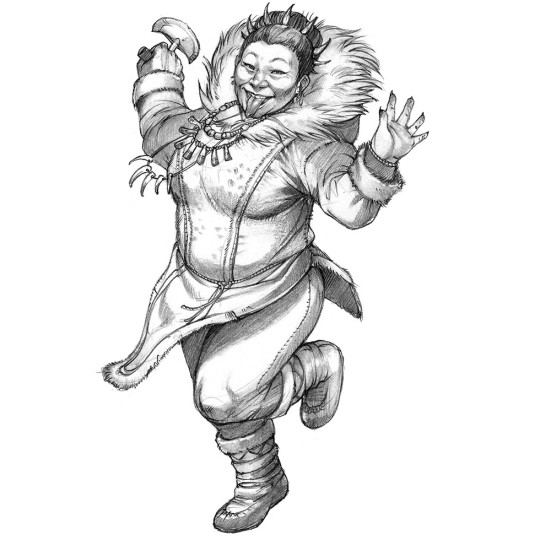
Aagjuuk the Entrail-Stealer [Inuit mythology]
In an earlier post, I talked about Taqqiq, the benevolent lunar spirit from native Inuit religion. Whenever a person dies, it is Taqqiq who guides them to the afterlife. Though he is a powerful and important spirit, he is not the sole inhabitant of the Earth’s moon. When Taqqiq is guiding a soul, they are greeted by Aagjuuk, also called Ululijarnaat or Aukjuk. This enigmatic spirit resembles an old woman and some versions claim that she is Taqqiq’s cousin. She always carries an ulu knife (a traditional Inuk tool for cutting ropes, hair etc.) and a copper pot.
Aagjuuk puts on a kind and friendly façade, but in reality she is a cruel and vicious monster. She will attempt to make the visitor laugh, but this is a test, and the soul must remain absolutely emotionless. If the victim so much as giggles, she will slice open their stomach with her ulu knife and then collect their innards with her copper pot. She then devours the victim’s entrails. Because of this, this spirit is fittingly called the ‘entrail-stealer’.
An Angakkuq (an Inuit shaman) could also converse with Aagjuuk through a special spirit-summoning ceremony, something like a séance. But this was a dangerous practise, for the entrail-stealer would then attempt to make the shaman laugh. If she succeeded, she would open the shaman and steal their entrails, just like she does with victims in the afterlife.
Oosten argues that it is also a symbolic thing: a hunter who does not manage to restrain or control himself will eventually become food for something else.
Sources: Christopher, N., 2013, The Hidden: a compendium of arctic giants, dwarves, gnomes, trolls, faeries, and other strange beings from Inuit oral history, 191 pp, p. 178-183. Oosten, J. G., 1981, The structure of the shamanistic complex among the Netsilik and Iglulik, Études/Inuit/Studies, 5(1): pp. 83-98. Barraclough, E. R., Cudmore, D. M. and Donecker, S., 2016, Imagining the Supernatural North, University of Alberta, 328 pp. (image source: Eva Widermann on Artstation)
68 notes
·
View notes
Text
Kya Headcanons
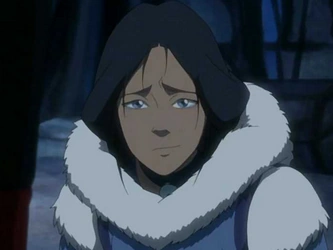
So, I've been thinking a lot about Kya (Katara and Sokka's mother), lately, and started brainstorming a ton of headcanons for her that I want to share because she does not get nearly enough love. Some of them I've had floating around in my head for a while, but others I came up with only recently or just today. Also, I included some of my Southern Water Tribe headcanons. So, take a gander and tell me what you think of my ideas for Kya's story.
Personal Info:
She was a member of the Polar Leopard Clan, one of seven sacred clans that are believed to be directly descended from the Southern Water Tribe’s founder.
Kya was always an adventurous soul. From a young age, she was interested in exploring and even traveled to parts of the South Pole that were considered especially dangerous. She always hoped to one day travel the world.
She wanted to be a waterbender more than anything. Since she was little, she would try to waterbend and practiced the moves for it that the elders remembered. Even when everyone told her she wasn’t a waterbender, she kept trying. And even after she came to terms with the fact that she wasn’t one, she still practiced the few moves she knew in case any waterbenders were born and because she found she just enjoyed it.
Her favorite food was seal-jerky. She would always eat it aggressively and people who saw her eat it would say she looked like a ravenous wolf as she tore into the salty meat strips.
She had a beautiful singing voice and taught Katara and Sokka traditional Water Tribe songs.
Despite her vast knowledge of Water Tribe songs and stories, she was terrible at poetry. When she and Hakoda were courting each other, he would come up with beautiful poems and truly creative ways of flirting while Kya fumbled with her words and got all tongue-tied and awkward.
Kya was the worst at hunting in her family because she always had trouble keeping quiet and sitting still for long periods of time. She was easily bored and would start talking or fidgeting and would alert prey from all the noise she made.
Kya loved doing creative projects like carving, weaving, beadwork, basket-making, etc. She was especially skilled and could spend hours focusing only on whatever thing she was working on and would forget to eat or do her chores because she was so into it. It’s from Kya that Sokka inherited his love for art and handicrafts.
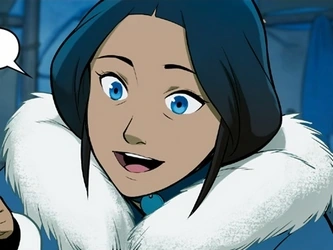
Early Life & Family:
Kya’s mother was in her forties when she had her, leading many people to speculate that Kya was actually the child of her older sister and that her parents were trying to cover up an out-of-wedlock pregnancy. The rumors weren’t true, but her mother was embarrassed about having a child later in life and claimed her pregnancy was actually a tumor right up until Kya was born.
Her relationship with her mother was very strained and cold. Kya sometimes wondered if her mother even loved her at all. She was never physically abusive, but she was also never kind or nurturing and seemed indifferent to her children and often gave the impression that she regretted having them. Her mother was a capable hunter and the main provider of food for the family. Her mother died on a hunting trip while fighting single-handedly against an arctic wolf-bear; she managed to take the creature down and, with her dying breath, asked the warriors to serve the animal’s meat at her funeral dinner and give the pelt to her family. Kya’s mother had a brother and a sister who were both waterbenders that were taken by the Fire Nation.
Kya’s father was an angakkuq (something like a shaman or medicine man in real-world Inuit culture) who was the main spiritual leader for their clan. He was kind to his children, but was often distracted by his vocation and wasn’t really in the right headspace to properly raise them. It’s not entirely certain that he’s dead. When Sokka and Katara were still very young, he wandered out onto the tundra one night, claiming to hear the spirits calling to him, and never came back. There were tales from the hunters, though, that they’d seen him walking the tundra when the winds picked up, chanting prayers to the tribe’s guardian spirits to watch over them.
Kya was the youngest of six children. She had four older sisters and a brother.
Iara (eldest sister) – She basically raised her younger siblings and became a mother figure to them. She sacrificed much of her own happiness to look after her family, even turning down a marriage proposal from the man she loved because she felt responsible for looking after everyone and wasn't sure she could manage raising her siblings and starting her own family. Kya adored Iara and later felt guilty for how much her sister had given up for her sake. Iara ended up dying from heart failure shortly before Kya gave birth to Katara.
Nuvua (second sister) – A sociable people-pleaser. Nuvua always tried to make friends with everyone and soothe ruffled feathers within her clan and with other members of the Water Tribe. She did try to help Iara with their siblings, but ultimately left her behind when she married young and had a family of her own. She ended up becoming elected the clan mother (a type of matriarchal figure in charge of managing the village) of the Polar Leopard Clan over the wife of the clan chief. She and Kya were never especially close, but she was still devastated when Kya was murdered.
Asiri (third sister) – A wild troublemaker. She was always pulling pranks and laughing at other people. She could be a bit of a bully, at times, and often picked on Kya, leading to a difficult relationship between them as they grew up. Asiri later ran off with a young man from a clan that was enemies with theirs, claiming it was true love and that they were defying a stupid feud. It turned out the guy was just using her to humiliate her clan; after he got her pregnant, he abandoned her and started mocking her publicly, claiming that all women in her clan had no sense of decency. Asiri returned home in shame and was nearly thrown out by the clan chief, but Kya spoke up for her and convinced the clan to stand by her. Asiri ended up struggling with depression for a number of years afterwards and developed serious trust issues. She ended up spending most of her time as part of her clan’s hunting party, as she was the best hunter of all her siblings. After Kya’s death, Asiri cut off contact even more and rarely spoke. When the men left to fight in the war, Asiri became the primary hunter for the Polar Leopard Clan and has had to also train the kids in her village to hunt.
Atka (fourth sister) – A quiet, spiritually-minded woman. She followed in her father’s footsteps and became an angakkuq. She fell in love with a young woman and had a “half-moon marriage” (a euphemism for same-sex couples). She and her wife adopted Asiri’s child, a boy, because Asiri had no interest in keeping him after what his father put her through.
Nuka (brother) – A wide-eyed dreamer. He was always goofing off as a kid and never took anything too seriously. Despite being older than Kya, he followed her around a lot and joined in her hijinks and adventures. He was still a very casual guy when he grew up and got a reputation for being a shameless flirt. He became more serious and responsible, though, after Iara died and later when Kya was killed. He didn’t smile or laugh much after that and began to really train as a warrior. He became a trusted member of Hakoda’s war council when Hakoda was elected chief for the whole tribe; a lot of other warriors dismissively refer to him as “Chief Hakoda’s idiot brother-in-law,” but he is a very capable guy when push comes to shove. He’s one of the men who greet Sokka when he shows up at Chameleon Bay in “The Guru.”
Kya carved a set of rings from whale ivory, one for herself and each of her siblings. Despite whatever ups and downs they faced as a family, none of them have ever taken those rings off.
In addition to her actual brother, Kya had “clan-brothers” (male friends close to her age from her clan who were not necessarily related to her but who were considered family). Her clan-brothers really did not like Hakoda and sabotaged many of his efforts to court Kya. In one incident, they grabbed Hakoda and Bato (who was only involved because of his friendship with Hakoda), tied them in a fishing net, and tossed them onto a ship headed for a month-long fishing trip. Kya later chewed her clan-brothers out for their stupid, overprotective bullshit.
Despite how distracted Kya’s father could be, he was attentive enough to take her ice-dodging when she was fourteen. She earned the mark of the brave.
She always took her father’s lessons about spirits and religious traditions seriously. Even little things like always facing northward while eating blubber, never lingering in doorways, never whistling at night, always thanking the souls of the animals when she ate meat, never wasting any part of an animal, etc.
She nearly drowned once while saving another kid who had fallen out of a canoe while fishing. Then she nearly died of hypothermia from the freezing water.

Adult Life, Marriage, & Children
She had several romantic relationships before she married Hakoda:
She had a childhood sweetheart who became her best friend/honorary brother when they were older.
She was courted by a very handsome older boy when she was a teenager, but she caught him cheating on her and dumped him. She and the other girl also beat the living hell out of him.
She had a long-term relationship that led to an engagement. However, a couple months before the wedding, she and her fiancé both realized they really weren’t right for each other and broke up amicably.
There was a guy who was interested in her romantically whom she turned down because he gave her red flag vibes and he refused to accept ‘no’ for an answer. He kept following her around and trying to pressure her into a relationship, but she always rejected him When she and Hakoda announced their marriage, the guy tried to challenge Hakoda to a fight for Kya’s hand. Hakoda bluntly told him that Kya’s not a trophy and that, if he had a problem with the marriage, he would just have to deal with it. Hakoda then told Kya what had happened and watched in satisfaction as she stormed over to the creep and verbally eviscerated him.
Kya proposed to Hakoda. She gave him a hunting knife she hand-carved herself as a betrothal gift. Her clan wasn’t happy about the marriage because Kya chose to marry into Hakoda’s clan (the Wolf Clan) instead of him marrying into hers.
Kanna gave Kya her necklace as a legacy gift. In the Southern Water Tribe, when you marry into another clan, your in-laws have to give you a “legacy” gift to pass on to one of your children that is not strictly a practical item (no combs, knives, needles, etc.). Legacy gifts are usually things like jewelry, decorations, or ceremonial attire of some sort. When a woman marries into a clan, her legacy would pass to her daughter or her daughter-in-law; when a man marries in, then his legacy goes to his son or son-in-law.
While Kya was delighted to pass Kanna’s necklace to Katara, she did miss the familiarity of wearing it. So, Hakoda put his carving skills to the test and made a new one just for her; it wasn’t particularly good and his hand slipped a lot while making it, but Kya still loved it and wore it proudly.
Kya addressed Kanna as ‘Mom’ after getting married to Hakoda. She’d never felt comfortable using that term for her own mother or for her older sister. People who didn’t know the family would sometimes assume that Kanna was Kya’s mother rather than Hakoda’s.
Kya thought she wouldn’t be able to have children. She had several miscarriages and then no indication of pregnancy for a number of years before she had Sokka. In memory of her unborn children, she carved small figures of bone to commemorate them and pray for their safe return to the cycle of death and rebirth. When she was killed, Hakoda buried those little carvings with her.
She referred to Sokka as her ‘miracle’ when she delivered him safely and latercalled Katara her ‘blessing.’
When both Sokka and Katara were young they came down with terrible fevers from a sickness that was tearing through the South Pole. Kya stayed awake for days tending to them and praying to the spirits to save them.
When Katara was discovered to be a waterbender, Kya was overjoyed and convinced Hakoda to launch a search for a waterbending master. When no one could be found in the South Pole, she tried to talk her husband into them all going on a family adventure to the Northern Water Tribe to find Katara a teacher.
She was deeply compassionate towards people who were treated unjustly. During a gathering of the clans, the Whale-walrus Clan chief was brought before the council of elders for trying to beat his daughter, Tuktu, to death for “profaning herself with another girl.” Despite the man being publicly censured for his inexcusable actions, he threw his daughter out of the clan. Kya was the first to step up and offer Tuktu a place in their home. After this, little Katara, who had witnessed everything, asked her family if they would hate her if she grew up to like girls instead of boys, to which her mother responded that it didn’t matter if she like girls or boys or both or neither, her family would always love her. Tuktu later moved in with a girl in another clan, with whom she is still happily living by the time the show’s events roll around.
Kya was going to be named the clan mother for the Wolf Clan once Kanna stepped down, but she was killed before the official installation took place.
#kya#kya of the southern water tribe#mother of sokka and katara#kya appreciation post#wife of hakoda#katara#sokka#hakoda#hakoda x kya#southern water tribe#southern water tribe headcanons#kya headcanons#avatar headcanons#avatar the last airbender#atla#atla ocs#trigger warning#abuse#neglect#mental health isues#homophobia#toxic relationship#obviously not in kya and hakoda's marriage#and kya and hakoda are good parents#southern water tribe culture#none of the triggers are graphic but I want to be cautious#redbayly
26 notes
·
View notes
Note
all the posts youve tagged as igsi have created SUCH an interesting portrait!!! if you ever want to talk about him, please take this as an invitation!!
sending this ask is like hand-feeding me crack cocaine. I WILL utilize this invitation i will tell you this man’s fucking life now. under the cut because this gets extremely long but tl;dr for anyone else: Igsi is my angry dog coded character who hates authority and will NOT respect gods (even though he ends up dating one)
OKAY so to start off. Igsivalitaq “Igsi” Anderson is a guy from my original story Ittuatuq and I’ve written a few things for it but I never actually wrote anything with him, though I should Really Change That. he’s one of the main antagonists in the second book/season (I section off Ittuatuq into books/seasons cuz im insane), but over time he becomes part of the main protagonist cast instead.
so, backstory: Igsi grew up in Iqaluit, Nunavut. He lives with his mother and father, but also an anthropologist named Roland Lawrence who’s lived there most of Igsi’s life(not important now but later), and as he grew up he started getting into trouble with authority, even at a young age. at first it started with petty domestic stuff, like acting out for attention at home or teasing classmates, but over time it started really escalating into getting into trouble with the law with crimes like theft, trespassing, underage drinking cuz of good ol undiagnosed mental illness. he specifically starts running into trouble with one RCMP officer in particular, Officer Nakasuk.
so, Igsi obviously starts to form a grudge against him, and he starts to repeatedly antagonize the Officer specifically. in turn, the Officer and Igsi’s parents set him up with the Officer’s mother, who we just call Mentor. the Mentor starts Igsi on a very spiritual path towards healing and also lowkey teaching him about being a whole ass angakkuq in the hopes that this makes him stop being such a troubled kid. and while Igsi does actually get very, very interested in traditional spirituality and does end up liking the mentor and wanting to be a full-fledged angakkuq, his troubles with the law still get worse.
this all REALLY comes to a head just after he turns 18. the night Igsi gets released after a gruelling inpatient treatment that really left him frustrated, he and the Officer really come to a head. theyre alone and it’s a dark winter so they’re really saying like the shittiest things possible. one thing leads to another, Officer Nakasuk threatens Igsi with a stun gun, Igsi’s frustrations of being treated like shit for his entire life for things he never got Actual help for while being consistently incarcerated by the people who have authority over him finally overflows, and… oops! Igsi utilizes his angakkuq power andddd the Officer is dead.
THIS is where the dog coding really kicks in because it’s like. oh my god, he killed a person. he has fought and injured people, yes, but he has never actually killed someone. and he’s an adult, there is no juvie waiting for him, its Real Prison, and while he has hated the Officer for breaking his community apart, he’s still law enforcement. this shit is going to ruin him. so… he runs! he runs away with practically zero preparation, into the very dangerous tundra wilderness in the dead of winter. and he essentially just becomes a stray dog, living on scraps while a part of him desperately wishes he could return home and curl up in the lap of his parents, but he KNOWS he can’t do that.
but at the same time he refuses to believe that what he did was wrong. that he’s done what should have been done long ago, that he DESERVED to bite the way he did, because goddamn it, he was horribly oppressed by a system that was created to subjugate people like him, and he will never be the boy he was again, and isnt that enough to prove it was worth it? its during this exile that he really feels dejected by the entire world, from controlling human society and uncaring spiritual society, that he’s like Fuck it, whatever happens to me, i dont care, i will never follow anyone’s orders ever again.
anyway. hes about to die in the tundra due to hypothermia (lmao) when he encounters a spirit made of flame. this spirit is a tuurngaq, an auxiliary spirit that angakkuit can bond their souls to and gain extraordinary power, named Paliq. Paliq is a whole other can of worms lol but essentially, the two of them have very similar ideals in regards to authority and being controlled, so they make a deal: they can bond, Paliq will keep Igsi warm and protect him from then on, but in return Igsi cannot treat Paliq like a regular tuurngaq and they must act like a team, not with no orders or subordinates. which Igsi is like okay yeah perfect.
this however does Not solve the fact that Igsi is wanted and also starving OOPS. so one way or another, Igsi ends up returning to Iqaluit, and obviously he’s fucking arrested. and while Igsi and Paliq are planning to find a way to escape and leave the country (its a terrible plan), guess what. it’s that fucking anthropologist in the beginning didn’t expect THAT. and he’s like Listen Igsi. youre a good man if a bit misguided. I can get you out of this situation to the best of my ability, but in return you have to tell me about what your mentor has taught you, and also tell me about your new friend. because turns out, while this anthropologist joined Igsi’s family to study poverty and culture in Inuit families, he ended up getting really obsessed with the “lost” art of traditional angakkuit so now he wants access to it.
Igsi agrees, the court proceedings go surprisingly well bc Lawrence has the money to provide Igsi with a good lawyer, and Igsi gets off with manslaughter. so he still does time but like, better than second degree. and while Igsi has obviously lost the trust from his Mentor for killing her son, he still has a lot of angakkuit knowledge that he starts to provide for Lawrence, and while Lawrence is very careful to make the whole transaction seem very equal bc they’ve known each other for so long and he knows Igsi’s deal with authority, he basically has Igsi on a leash and is using him as a working dog isnt that FUCKED. I love it.
this goes on until “present day” in the story (which actually takes place in 2030 cuz im insane), where Igsi is finally off of prison. and Lawrence is like hey I’ve got word from two reputable angakkuuk (the protagonist’s, Piqati’s, parents) that theres actually a super small hamlet in the middle of buttfuck nowhere where a living god resides and is basically a bastion for power and spirits. come with me and we can go there and you can basically do whatever the fuck you want there forever and i get to pursue my studies (unlimited power but Igsi doesn’t know that). and Igsi is like Fuck Yeah let’s go.
SO. NOW HES LOOSE. he enters Ittuatuq and immediately starts antagonizing the fuck out of everyone in there, but especially Piqati and his friends. WHICH IS INSANE. BC THEYRE 18 YEARS OLDS WHO ARE STILL IN SCHOOL and at this point Igsi is 24 it’s like. he’s beefing with high schoolers and he’s very pathetic about that. But what i reallyyyy wanna focus on is his interaction with a certain character: Airaq, the VERY beloved bear deity of Ittuatuq.
HIS DYNAMIC WITH AIRAQ IS SOOO. RRAUURAGH if you love dog coding and religious doubt then this is it this is the place. at first Igsi starts pursuing Airaq because he’s kind of very into the whole challenge of getting with a deity and the fact that Airaq seems so pure and beloved on the outside. so it starts out with very casual flings and hook ups, but over time as the plot moves on Igsi starts getting really attached to Airaq and it’s like. oh shit. now all of a sudden he feels himself getting wrapped around a god’s finger, instinctively doing what Airaq says (the whole fucking “call your dog off” dynamic), and oh god, is this going against his ideals? what does it mean that he’s falling in love with a god?
so yeah. dog metaphors, religious metaphors, and crazy insane power dynamics all about. also stupid crazy faggot sex but thats not what you asked for and i wont embarrass myself elaborating here LMAO.
OKAY THIS GOT VERY LONG. and i could honestly do this for hours but this is, believe it or not, just a brief overview of him and i barely even got into the main plot. if you or anyone who is reading this wants anything more specific then please feel free to ask and ill go even deeper. god i really need to actually start writing him cuz im obsessed with him genuinely.
thank you for asking this if you read all of this my dear mutual sworcerie im kissing you square on the lips (or just high fiving you if that’s cooler)
(btw heres him all drawn by my gf)
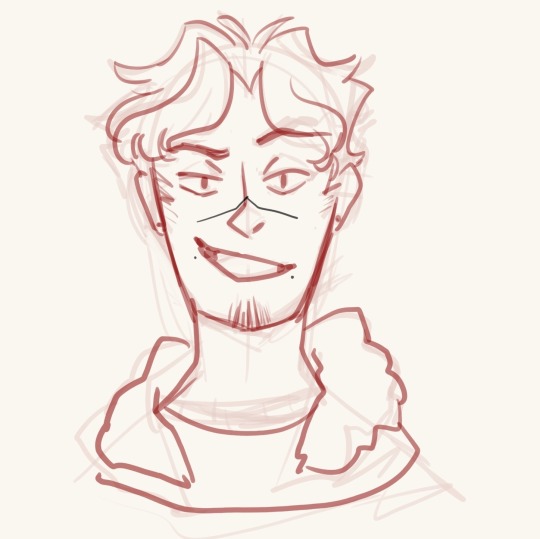
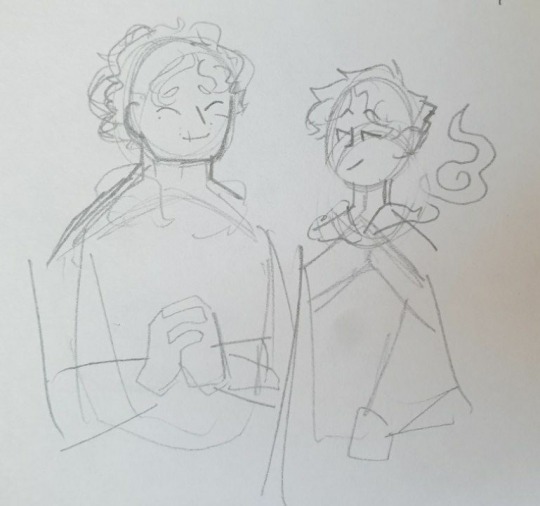

#asks#sworcerie#mewfies#ittuatuq#i wrote so much that I legit have to rb this to my ittuatuq blog lol
11 notes
·
View notes
Text

Photo taken of a shaman around 1890 in Alaska and a portrait of Knud Rasmussen in eskimo gear in 1906. Text reworked from Eskimo Shamanism written by Erik Holtved in 1967.
"The shaman death experience among inuits. Among Inuit angakkuq (shaman) and specifically the Iglulik shaman must be able “to see himself as a skeleton” and name all the parts of his body, every single bone by name in the sacred shaman’s language. This greatly recalls the “dismembering” of Siberian shamans. Also a kind of “worm test”, reminiscent of American Indians’ “ant test”, has apparently been known by the Eskimos.
By letting worms eat the meat from the body the shaman became “light and shining”, as (the insanely good looking) anthropologist Knud Rasmussen was told in North Alaska in the first years of the 1900s. That the shaman is shining, or filled with an inner light, is a widely spread idea. In this way he was thought to be observed by his helping spirits."
Via This is the digital wunderkammer of Swedish artist Jonas Liveröd. www.luftslottet.vision
13 notes
·
View notes
Text
Masterpost: Cold Winter
Here is the masterpost for my Cold Winter series, my seasonal series about the snow and the frost, about the long nights and the northern countries.
Norse mythology:
Ymir, Thor, Sleipnir, Fenrir, Yggdrasil, Tyr, Skadi, Heimdall ; Andvari (and Alberich) ; Fylgja
Lords of the cold:
Pakkanen, Jack Frost, the wendigo, Boreas ; the Wintersmith
The queens of winter:
The Cailleach ; Frau Holle ; the Snow Queen ; the White Witch
Christmas season:
Krampus ; the Père Fouettard and more about him ; Saint Nicholas ; Santa Claus and Frank Baum's version ; los Reyes Magos ; and the Befana (plus more about her)
Ancestors of Christmas:
The Mithraic mysteries ; the Jolnir theory ; Saturnalia and more about Saturn ;
Legendary warriors of the north:
King Arthur (and more), the Fir Bolg, Beowulf and Wagner's Siegfried (plus more about him)
Fantasy warriors, barbarians and northmen:
Prince Caspian ; Conan the Barbarian ; Red Sonja ; Fafhrd and the Gray Mouser
French BD:
Ghorghor Bey ; Thorgal ; Asterix and Obelix (and more)
Tolkien's Legendarium:
Hobbits , Gollum and the children of Hurin
Other folkloric/mythological/religious beings:
The dahut (French folklore) ; Tekkeitsertok and the angakkuq (Inuit beliefs), trolls and more about them (Scandinavian folklore) ; Chernobog (Slavic mythology) ; Tezcatlipoca (Aztec mythology)
#cold winter#masterpost#norse mythology#winter#frost#snow#legends#folklore#barbarian#fantasy#christmas#seasonal theme#french media#french stuff
17 notes
·
View notes
Text








Hiver 1906, Glacier de Fharhond, Canada (12/20)
Je ne pouvais pas continuer la mission pour laquelle nous étions partis. À mon réveil, il fut décidé - par Tagak - de la nécessité de me ramener au sémaphore, et de poursuivre la mission une fois que je serai hors de danger.
[Transcription] Jules Le Bris : Qu’allons-nous faire pour Amundsen ? Tagak Angottitauruq : Regarde. Jules Le Bris : Cette lumière… C’est un feu de camp ? Tagak Angottitauruq : À deux miles, peut-être trois. Jules Le Bris : Est-ce que ça pourrait être Amundsen ?… Tagak Angottitauruq : Amundsen, ou des Netsilik. Et si ce sont des Netsilik, ils savent où est Amundsen. Jules Le Bris : Nous devons aller à leur rencontre. Tagak Angottitauruq : Dans ton état ? Non, demain matin, nous retournons au sémaphore, et j’enverrai un télégramme pour qu’on nous dépêche un médecin. Jules Le Bris : Mais nous sommes si proches ! D’ailleurs peut-être qu’ils ont un médecin là bas. Tagak Angottitauruq : Ils auront un angakkuq. Mon père était angakkuq et il m’a appris ce qu’il savait. Leur angakkuq ne pourra rien faire de plus que ce que j’ai déjà fait. Nous partons demain. Jules Le Bris : Mais Amundsen… Tagak Angottitauruq : … survit depuis trois ans. Souviens-toi du télégramme. Des Netsilik sont avec lui. Il est entre de bonnes mains. Nous reviendrons.
#ts3#simblr#legacy challenge#history challenge#decades challenge#lebris#lebrisgen3ter#Jules Le Bris#Tagak Angottitauruq
6 notes
·
View notes
Text
Original Character: The Spirit Tamer

Introducing: The Spirit Tamer
Technical Information
Name: Tamannuk Arlooktoo
Japanese: タマナック・アールクトゥー
Romaji: Tamanakku Arukutou
Nickname(s): Polar Bear (Floyd), Monsieur Guérisseur (Rook)
Biographical Information
Gender: Male
Pronoun: He/Him
Age: 18
Birthday: September 21
Starsign: Virgo
Height: 164cm
Eye Color: Storm Gray
Hair Color: Dark Brown
Homeland: Nuti Tâvani
Family: Mother, Father, Sinnatomak (Younger sister)
--
Professional Status
Dorm: Savanaclaw
School Year: Third
Class: 3-E (No. 3)
Occupation: Student, Training to become an Angakkuq (Shaman)
Club: Mountain Lovers Club
Best Subject: Animal Linguistics
--
Fun Facts
Dominant Hand: Left
Favorite Food: Dried Meat/Jerky
Least Favorite Food: Anchovies
Dislikes: People touching his things without permission
Hobby: Meditation
Talents: Wood Carving
--
Appearance:
Tamannuk has dark hair pushed back with strands framing his face with a pair of braids tucked behind both ears. He has storm gray eyes with a dark complexion. Overall, his features present androgynously.
Tamannuk wears the white dress shirt under the standard Savanaclaw school vest with the gold-lined black pants. Instead of the school-issued black blazer, he prefers to pair his uniform with his white-furred gray parka, still choosing to wear it in the heat as well. Do not ask him where his dorm armband is, he lost that many semesters ago. Tamannuk’s dorm uniform consists of the standard dark-yellow shirt and worn-out jeans. Again, he prefers to wear his furred parka instead of the dorm’s vest. Much like the rest of his dorm, he wears the bandanna wrapped around his waist. For both his school uniform and dorm uniform, Tamannuk wears black steel-toe boots.
--
Personality:
Tamannuk is a fellow of few words, preferring silence over noise. He tends to stick by himself, but for the few people he is close with, Tamannuk has a never wavering loyalty, unless they have wronged him to the point of no forgiveness.
--
Background:
From the moment of his birth, the elders of Tamannuk’s tribe saw that he was destined to become the next angakkuq, spiritual guide. The moment he turned of age, Tamannuk was taught the spiritual ways of their people. At the age of ten, his mother gave birth to another child, a girl, whom they named Sinnatomak. Several years later, he received a letter of admission from Night Raven College to attend their prestigious academy, and he has attended for the past two years, going into his third.
--
Abilities and Unique Magic:
Because of his lifelong education, Tamannuk is very educated about both spirits and animals.
Tamannuk’s Unique Magic is called “Great Spirits”. His magic, aided by his knowledge of spirits and animals, allows him to mimic the abilities of an animal spirit he has befriended. In order to gain the abilities of an animal, he must hold a ritual. During this ritual, Tamannuk is able to contain the spirit of the chosen animal into his amulet for a single day. To change the contained spirit, he must release it before completing another ritual to call upon another spirit.
Incantation: “I ask now for guidance. Take my hand and lead me. Give me wisdom and give me strength. Great Spirits.”
--
He is twisted from Denahi from Disney’s Brother Bear.

More information will come out in the future~
Disclaimer: I am not of Inuit descent, so if you are and notice anything wrong, please tell me!!!
#tamannuk arlooktoo#the spirit tamer#savanaclaw#brother bear denahi#twst oc#twst male oc#twst inuit oc#twisted-ocs#twisted wonderland#disney twst
5 notes
·
View notes
Text
Sedna ᓴᓐᓇ
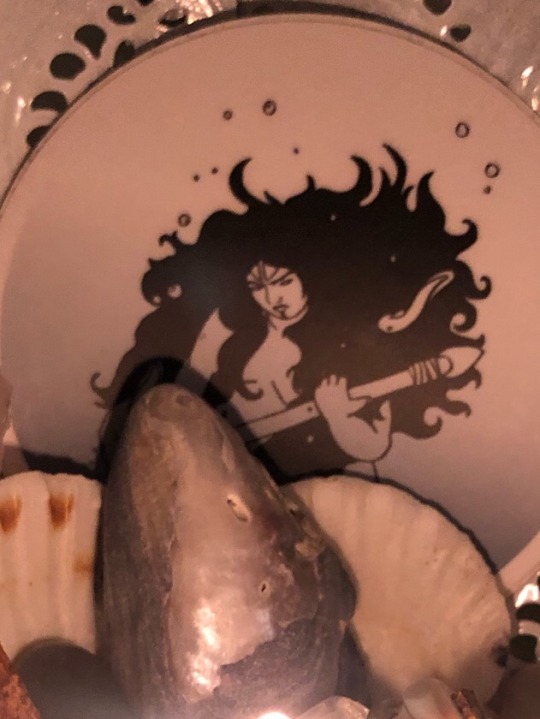
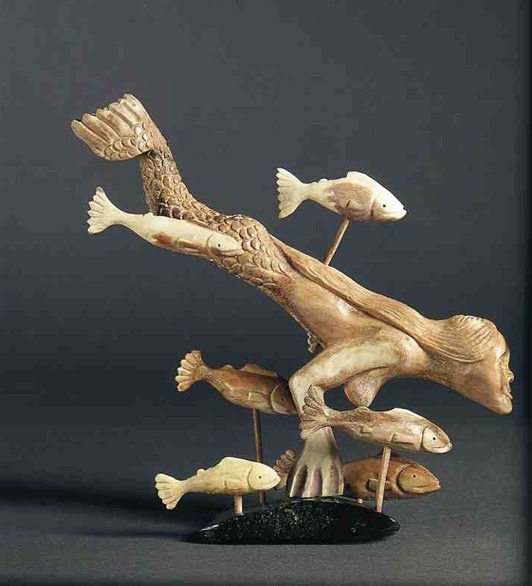
Sedna (Inuktitut: ᓴᓐᓇ) is the goddess of the sea and marine animals in Inuit religion, also known as the Mother of the Sea or Mistress of the Sea. The story of Sedna, which is a creation myth, describes how she came to rule over Adlivun, the Inuit version of the underworld. In sculptures, Sedna is often depicted with the head and upper body of a woman and the tail of a marine mammal, similar to a mermaid.
Sedna is known as Arnakuagsak or Arnaqquassaaq in parts of Greenland. She is called Sassuma Arnaa ('Mother of the Deep') in West Greenlandic and Nerrivik ('Table', Inuktun) or Nuliajuk (District of Keewatin, Northwest Territories, Canada). She is sometimes known by other names by different Inuit groups such as Arnapkapfaaluk ('Big Bad Woman') of the Copper Inuit from the Coronation Gulf area and Takánakapsâluk or Takannaaluk (Igloolik). In Killiniq, Labrador, she was referred to as 'Old-woman-who-lived-in-the-sea'.
More than one version of the Sedna legend exists. Some legends have her as the daughter of a goddess named Isarrataitsoq, while others only mention her father.
In one legend Sedna is a giant, the daughter of the creator-god Anguta, with a great hunger that causes her to attack her parents. Angered, Anguta takes her out to sea and throws her over the side of his kayak. As she clings to the sides, he chops off her fingers and she sinks to the underworld, becoming the ruler of the monsters of the deep. Her huge fingers become the ringed seals, walruses, and whales hunted by Inuit.

In another version of the legend, she is dissatisfied with men found for her by her father and so marries a dog. Her father is so angry at this that he throws her into the sea and, when she tries to climb back into the boat, he cuts off her fingers. Her fingers become the first seals and she becomes a mighty sea goddess. When she is angered, the angakkuq (shaman) travels to wash and comb her hair for her, after which she is placated and releases the animals to the hunters. In other versions, she is unable to comb her hair because she lacks fingers, so a shaman must brush it for her.
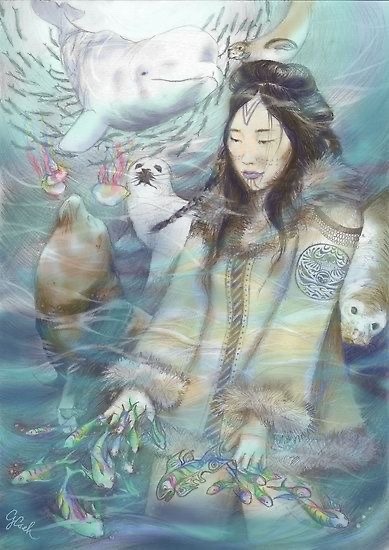
In the Netsilik region, the story states that Nuliayuk was a mistreated orphan. One day the people tried to get rid of her by attempting to drown her by chopping off her fingertips, which transformed into seals and walruses. Eventually, Nuliayuk marries a sculpin and lives in the sea controlling all sea mammals.
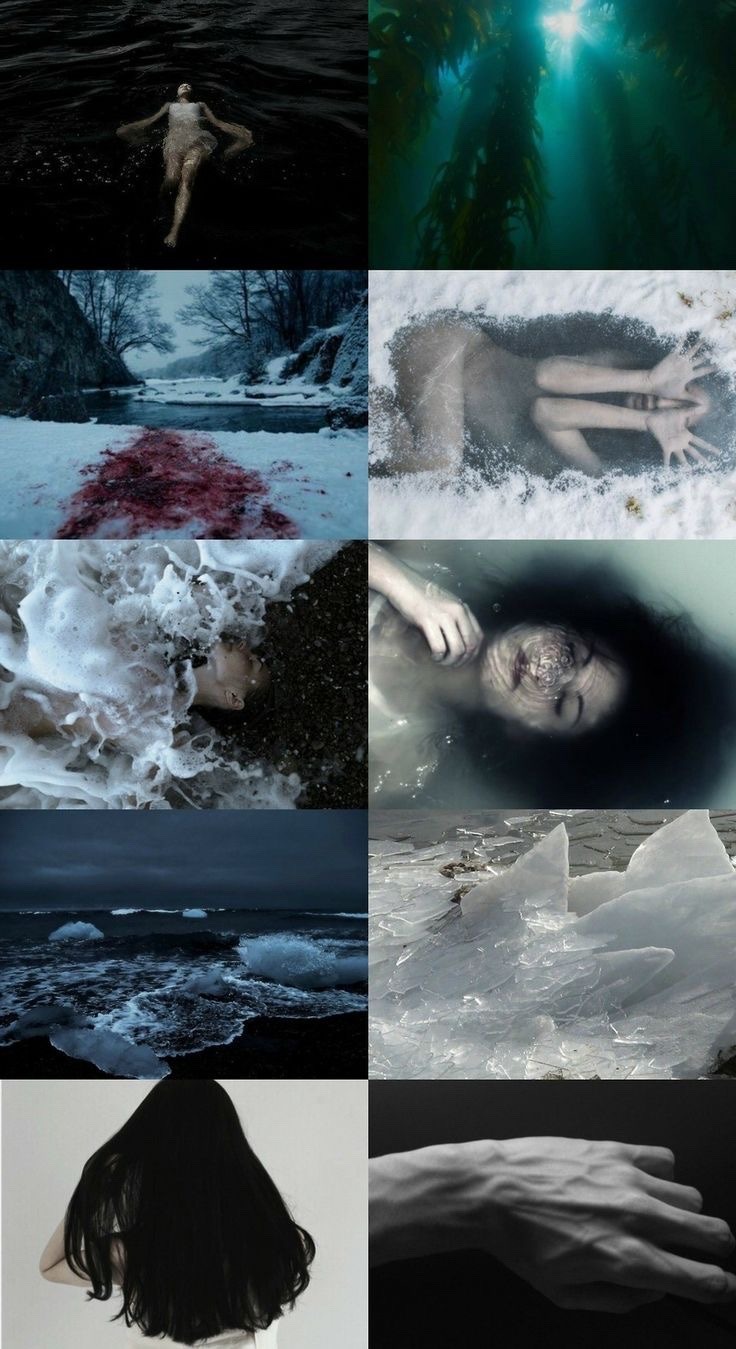
Other versions of the legend depict Sedna as a beautiful maiden who rejects marriage proposals from the hunters of her village. When an unknown hunter appears, Sedna's father agrees to give her to him as wife in return for fish. Sedna's father gives Sedna a sleeping potion and gives her to the hunter who takes her to a large nest on a cliff, revealing his true form: a great bird-spirit (variously described as a raven, a fulmar or a Kokksaut / petrel-spirit). She wakes surrounded by birds. Her father attempts to rescue her, but the bird-spirit becomes angry, causing a great storm. In desperation, Sedna's father throws her into the raging sea. Attempting to cling to the kayak, her hands freeze and her fingers fall off becoming the creatures of the sea. She falls to the bottom of the sea and grows a fishtail.

Sedna is kidnapped or deceived by a different bird creature in yet another version. Her father then leaves in his kayak to rescue her from the floating ice-island where she is imprisoned while the bird creature is away. The creature, enraged by her disappearance, calls to a spirit of the sea to help him. The sea spirit locates the kayak with the two humans aboard and creates huge waves to kill them. Her father throws Sedna overboard in the hope that this will appease the angry god. Sedna clings to the kayak but her father grabs a little ax and chops three of her fingers off before striking her on the head. The three fingers each become a different species of seal. The stroke to her head sends Sedna to the ocean floor where she resides, commanding the animals of the sea.
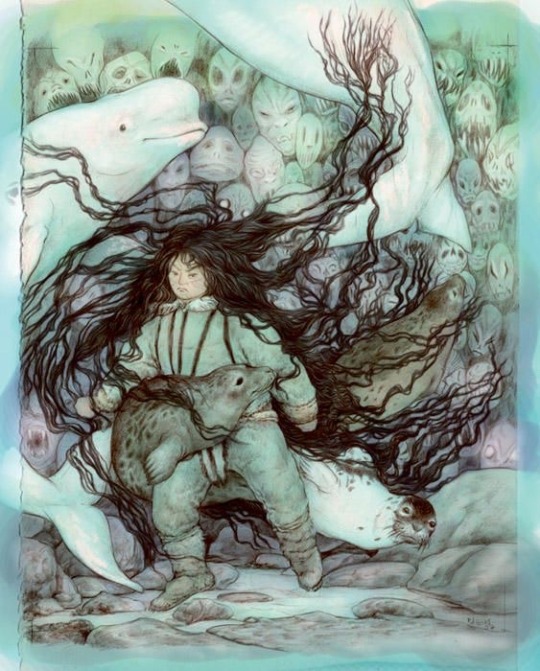
In an additional version of the story Sedna marries a man who claims to be a fantastic hunter. He then takes her away to a distant island and once there he reveals himself to be a birdman. Being a birdman he was not a good hunter and could only hunt fish. Unable to escape the island she resigned herself to her situation, until her father came to visit one day. Her father decided to kill the birdman upon realizing he lied about who he was, attempting to rescue his daughter. They left the island on her father's kayak, when the birdman's friends attacked them in retaliation. They flew above the kayak and created great waves to attack the kayak with. Sedna's father was so frightened he threw her overboard; she then grabbed onto the edge of the kayak holding on for her life. Fearing she would tip over the boat her father cut off her fingers, making her fall into the water. The fingers that were cut off then became sea animals and she sank to the ocean floor where she became a spirit of the ocean.

In one Baffin Island tradition, Sedna was in a kayak with her family when a storm started. Her parents thought she was to blame for the storm and threw her into the sea. She clung to the kayak, but her father cut her fingers off: first the tips, then the second knuckle, then the last knuckle. Her disembodied fingers turned into sea creatures. Sedna gained control over the animals. If humans angered her, she could stop the animals from coming to their hunting sites, thus causing famine.
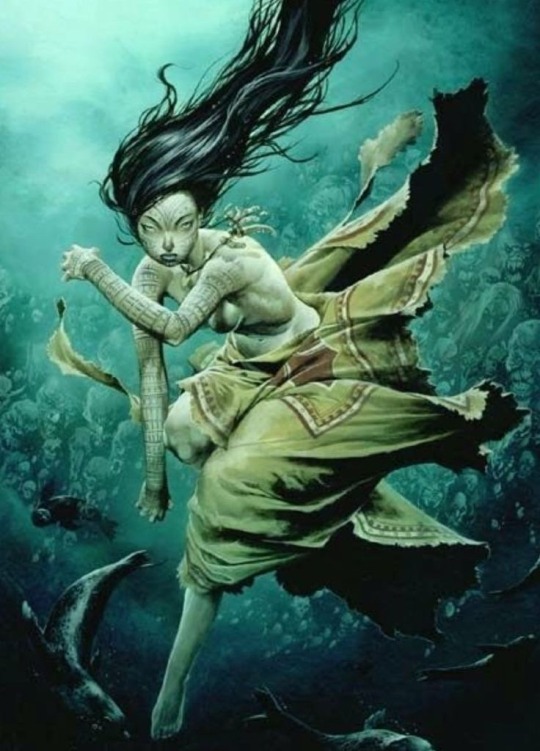
The varying legends each give different rationales for Sedna's death. Yet, in each version, her father takes her to sea in his kayak, chopping off her fingers. In each version she sinks to the bottom of the sea, worshipped by hunters who depend on her goodwill to supply food. She is generally considered a vengeful goddess, and hunters must placate and pray to her to release the sea animals from the ocean depths for their hunt. At Killiniq, people threw worn-out harpoon-heads, broken knives, and morsels of meat and bone into the sea as offerings.
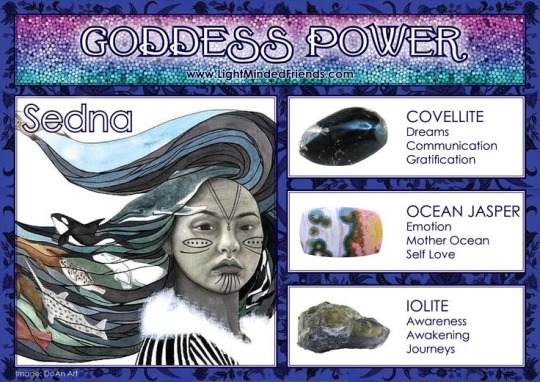
0 notes
Text
Glossary of West of the Sun, East of the Moon
Main Text • Explanation
Note that a letter ‘q’ without a u behind it, in the beginning or middle of a word, sounds the same as the the sound for ‘k’. A ‘q’ at the end of a word is pronounced ‘kw’. But say it fast, and don’t drag it out. If you drag out the sound ‘br’ it could sound like ‘buhruh’ which is not the intention - it’s supposed to be one little sound. Same thing with ‘kw’. The best way to say it comfortably and quickly is to make the ‘k’ sound and then drag your lips down slightly to draw it into a ‘w’ sound. However, I’m not an actual speaker of the language, and if you’d like accurate instructions and to hear usages, look up examples on YouTube!
Miscellaneous
Akutuq - ah-koo-tukw - a mixture of ice, fats, berries and sweet roots, comparable to ice cream. Modern versions may use dairy.
Angakkuq/it - ang-ahk-koo-kw/it - Village wizard
Baleen - bay-leen - the brush-like substance that toothless whales use to filter and catch little organisms like plankton.
Breadfruit - bred-froot- a tree farmed for latex and a pebbly light green fruit that has the texture of bread once the fruit is baked. Originally found in Southeast Asia, it is now farmed across the world.
Fried Oreo - fride or-ee-oh - a chocolate wafer sandwich cookie with a milk-based ‘créme’ inside, fried in cake batter. Often found on boardwalks.
Inuktitut - In-nuk-tih-tut - the name of the Inuit Language.
Kaakiniit - Kah-key-neat - Body tattoos. The author was unable to find the specific Yup’ik term for those, and so defaulted to the Inuktitut term used in many sources accessible to English speakers. Traditionally, it was believed that women who did not get their hands tattooed ended up in the ‘Land of the Crestfallen’, Noqurmiut, where they must walk around with their head down and smoke flowing out of their mouths. Women who did get their hands tattooed were blessed by the sea goddess Sedna, whose father chopped off her fingers and from which sea animals grew, and she gained power over them.
Kunik - koo-nik - A greeting gentle sniff, akin to a greeting kiss or more. See footnote for additional information.
Kuspuk - kuss-puck - A hoodie-and-tunic-like garment popular throughout Alaska. Invented by Indigenous Alaskans in the 1900s as hunting became scarce, white colonizers encouraged Americanization, and fabric became more accessible. Often characterized by tall center pouches with ribbon (or different material) trims. In Iñupiaq it is called atikłuk (ah-tee-shlook) and in Yup’ik qaspeq (kass-pekw)
Maniilaaq - man-ee-lakw - An Iñupiat man who lived in the 1800s and predicted many events post-colonization. He is a hero to many Alaskan cultures and is now the namesake of the health center in Kotzebue (Kotz-ay-boo)
Nagoonberry - nah-goon-bare-ee - an incredibly sweet Alaskan berry that can only grow in northern bogs. Looks and tastes similarly to raspberries.
Nanuq - nah-nuk - A polar bear. Sometimes spelled nanook in older texts. More or less the same across different Alaskan cultures.
Ojibwe - oh-jee-bway - Indigenous people of the plains of Canada and northern USA.
Rottman’s - Rot-mans - Alaskan grocery chain.
Tuniit - too-neet - facial tattoos. The author was unable to find the specific Yup’ik term for those, and so defaulted to the Inuktitut term used in many sources accessible to English speakers. These were used to show that a woman had hit puberty, knew how to take care of herself and was ready to marry. The nose stripes were specifically a Yup’ik tuniit.
Wawa - wah-wah - the corrupted form of the Ojibwe word for snow goose, we’we (way-way). It has been utilized as the name of an extremely popular convenience store chain in the Greater Philadelphia area, who uses the Canadian goose as its mascot.
Iñupiaq
Aaka - ah-kah - Mother (title)
Aakaga - ah-kah-gah - my mother. Note: usually in Iñupiat it’s paired with ‘una’ to be ‘una aakaga’, meaning my mother. But as Ada is speaks mostly English, I chose to just conjugate the noun.
Iñupiaq/k/t - In-you-pee-at/ak/akw - the Northernmost Indigenous people of North America. Additionally, their language is Iñupiaq
Mapkuq - map-kukw - a blanket. In Nalukataq context, a huge blanket meant to be used similarly to a trampoline mixed with the parachute gym toy. See Nalukataq
Naluaqtit/q - nah-loo-akw-tit/tikw - a mapkuq puller for Nalukataq.
Nalukataq - nah-loo-kah-takw - A blanket toss. Naluaqtiq bounce a participant up and down and then pull the blanket taut to send them high up. Now a sport, Indigenous hunters used this tossing method to send themselves high to look for prey over long flat distances. It is also the name of a whaling festival that takes place every summer in Utqiagvik where such a blanket toss takes place.
Nalukataq/t - nah-loo-ka-takw/tat - the people jumping on the mapkuq, often called blanket dancers
Qikiqtaġruk - Kik-ik-tug-rook - the main setting of this story, the town that is legally known as Kotzebue. Despite being located in Yup’ik territory, the name is said to be an Iñupiaq word or phrase meaning ‘looks like a small island’. Note: I chose to use the Indigenous name for the town because the story mostly features Indigenous people and other such municipalities have changed their name to more traditional ones, such as Barrow turning back into Utqiagvik.
Utqiagvik - oot-key-ag-vik - The northernmost city of the USA, formerly called Barrow. It means ‘place to gather tubers and roots’. The setting for Nalukataq.
Kwéyòl (Dominican Creole)
Accra - ah-krah - fritters made with salt-dried freshwater fish. Coincidentally the name of the capital of Ghana. The Ghanaian capital is named after the Twi word ‘Nkran’, in reference to the anthills found nearby.
Aime - ah-may - to love
Aussi - aw-see - also
Bien - bee-en - good or lots
Bon - bon - good
Bon swé - good night.
Curry colombo - a curry usually made with chicken, named after the popular Colombo chicken spice.
Farci - the Dominican version of farcie, a shell stuffed with the animal’s meat, breadcrumbs, butter and seasonings.
Je - * - the equivalent of the pronoun I in English, used when the speaker refers to themself.
Je t’aime bien - A phrase meaning ‘I love you lots’.
Maman - mah-mahn - mother
Mon - Mon - referring to themself
Mon aussi - a phrase that means ‘I also’
Nkran - nn-krahn - A Twi word meaning soldier ants and soldier anthills.
Oui - we - yes
T’ - ta - a reflexive prefix that makes a verb refer to the person with whom the speaker is talking *The letter ‘j’ in French and Kwéyòl sometimes sounds like the ‘s’ in ‘usually’. So ‘Je’ sounds somewhat like ‘say’ with that weird ‘s’.
Latin
Aurora - ah-roar-ah - dawn.
Aurora borealis - The Northern Lights, a meteorological light phenomenon seen only in the northern hemisphere, usually within the Arctic Circle. Magnetic ions from space hit the atmosphere and create dancing light patterns that are usually red through green colors, rarely blue or purple. There is a matching phenomenon in the southern hemisphere, usually located within the Antarctic circle, the aurora australis.
Australis - aw-straw-lis - referring to the southern wind of Roman myth.
Borealis - bore-ee-al-iss - referring to the southern wind of Roman myth.
Yup’ik
Assaliaq - ass-ah-lee-akw - fresh fried fish, with the entrails removed (for cleanliness) and the head removed (often for other dishes)
Ciss’uq - sis-ukw - two-week old herring that was fermented underground
Kumlaneq - kum-lan-ekw - frozen fish that is served frozen. Larger fish such as salmon are served in strips, smaller fish are served whole.
Niinamayak - nee-nah-mah-yak - half-dried fermented herring.
Qassaq - kass-akw - raw meat
Quaq - quak - raw and frozen meat
Tepa - tep-ah - fermented salmon head, a summer delicacy favored by older generations. It must be fermented traditionally, or else botulism sets in.
Tepcuaraq - tep-kwar-akw - Kumlaneq that is allowed to age slightly (kept cool but unfrozen) for about a week before being frozen. Usually eaten frozen with uquq.
Uquq - oo-kukw - oil from seal fat
Yup’ik - oo-pik - The Indigenous people of south and central Alaska, parts of western Canada and eastern Russia.
#Glossary#west of the Sun east of the moon#East of the Sun west of the moon#wac#had to split these up to cut down on post size
0 notes
Text
O.K. so yes the Tunbaaq is kind a sort a based on different things so *shrug*
There was a real live giant bear around ... the last ice age?
Plus teh inuit have something called a ...
Some spirits have never been connected to physical bodies. These are called tuurngait (also tornait, tornat, tornrait, singular ?tuurngaq?°, torngak, tornrak, tarngek).
Some tuurngait are evil, monstrous, and responsible for bad hunts and broken tools. They can possess humans.
An angakkuq with good intentions can use tuurngait to heal sickness and find animals to hunt and feed the community.
An angakkuq can fight or exorcise bad tuurngait, or they can be held at bay by rituals; However, an angakkuq with harmful intentions can also use tuurngait for their own personal gain, or to attack other people and their tuurngait.
In that case the tuurngait is called a ?tuurngaq?° a "killing spirit"
-> In teh book we learn that the Tuunbaq was created by the Inuit Godess Sedna, to kil her enemies
Now teh deal is, if you do that the Spirit will kill you once it is done with it's job OR if it is impossible to finish teh job
Tuunbaq could not kill Sednas enemies, so he tried to return to kill her but she did not let him back in to her realm, so he now is stuck on eart and rather pissed ...
The canned food being contaminated is a real theory, though there also seem to have been additional lead sources
The uniforms are historicalyl accurate,
the arctic gear is based on a later expedition (around 1900) but realized with the materials and tequiniques of the mid 19th century so they might have worn things like that. We don't know exactly what they wore (except that Harry Goodsir complained to his brother about the price of a set of fur coat/pants he had to shell out for ... )
The diving suit is possible
The womens costumes too are historicalyl accurate (Lady Jane and Sophia wear Suffraget colors) as are the civilian suits we see some of the men in, in flashbacks
The inuit costumes are propably as historicalyl accurat as the could get them with very little sources to work on (they are accurat, though if they are accurat for the adelaid peninsula in the years 1846 to 1848 is hard to proof), but they are all madefrom real furr (though I have spotted rubber soles ... )
There could be the question weather or not there should have been face tatoos for the Inuit characters ...
Now
I personally think that Diamanda Haga did a realy good breakdown (she is a fucking demon on the subject <3) , but her style is not everyones humor so you maybe should watch her trailer breakdown firts to see if that is what you like
(carefull, Brains ice mummie has a cameo in this)
youtube
This is basicalyl a mini documetary on the Fraklin expedition she did in 2017, before teh show came out, but it is very good
youtube
(it's in 4 parts)
And once the show was done, she did a comparison between teh show, the book and the real expedition
youtube
(It's in 10 parts for obvious reasons)
Terror fans, any videos or posts you would recommend for people breaking down the historical context/accuracy/authenticity of the show? I'm not quite obsessed enough yet to just straight up read a book on the Franklin Expedition (although if you have something you highly recommend I will log it), but I'm interested in stuff that's directly discussing the show. Is the Tunbaaq based on anything? Is all the canned food being contaminated with lead a hypothesis people have about real life? What about the costumes? That kind of stuff.
16 notes
·
View notes
Text
uvavnuk’s great sea
The great sea frees me, moves me, as a strong river carries a weed. Earth and her strong winds move me, take me away, and my soul is swept up in joy.
--- Uvavnuk (translated by Jane Hirshfield)
Note: Uvavnuk was an Inuit woman born in the 19th century. She became a poet and an angakkuq (shamanic spiritual healer), when her songs came to her in dreams. They were collected by European explorers of Arctic Canada in the early 1920s.
29 notes
·
View notes
Text
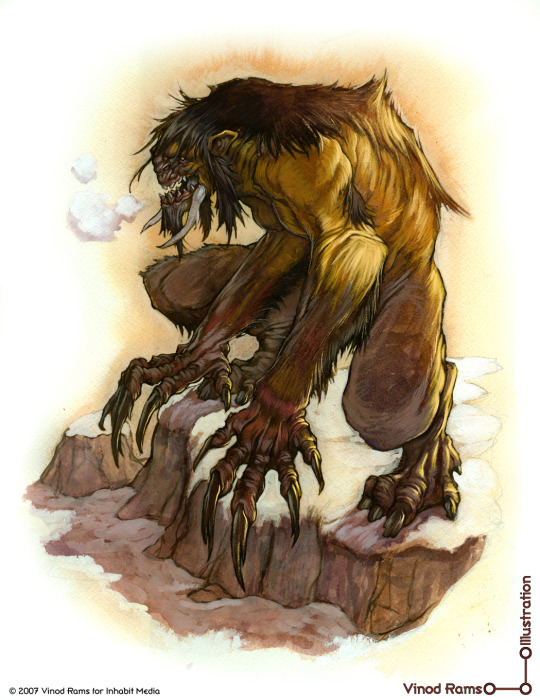
The Kukilialuit [Inuit mythology]
According to Inuit mythology, the frozen landscapes of Canada and Greenland are home to a mysterious and highly dangerous race of monsters. They are called the Kukilialuit, and while that name is often translated as ‘trolls’ or a different common word for monsters, their most defining characteristics are their long and viciously sharp claws, said to be like knives. Literally translated, the name Kukilialuit means something like “those beings with great claws”. Aside from their hands, they have a humanoid body.
Supposedly, the Kukilialuit live inland, far away from the coasts. Despite their monstrous nature, they are intelligent and build huts to survive the winter. Whether these are isolated huts or built together in a society or settlement is unclear.

What we do know is that they are relentless hunters and regularly eat human flesh. After killing a victim, the Kukilialuit carry their prey away and vigorously slice the flesh from their bones until only the skeleton remains. Slingerland and Collard use the story of a Kukilialuit as an example of folktales where lone travelers (or people who get isolated from a group) get picked off by monsters, teaching the audience that traveling by yourself is dangerous in inhospitable environments like the Arctic.
Only a particularly powerful Angakkuq (an Inuit shaman) can escape from these monsters.
Sources: Christopher, N., 2013, The Hidden: a compendium of arctic giants, dwarves, gnomes, trolls, faeries, and other strange beings from Inuit oral history. Slingerland, E. and Collard, M., 2011, Creating Consilience: Integrating the Sciences and the Humanities, New Directions in Cognitive Science, Oxford University Press, 472pp., p.634. (image source 1: Vinod Rams) (image source 2: Ethan Nicolle)
75 notes
·
View notes
Text
Inuktitut in Ittuatuq
This is a short glossary of the Inuktitut words (typically North Qikiqaaluk dialect) that may pop up in Ittuatuq, including some of the names of characters in the series.
This is to be updated as new words become relevant, new characters are made, etc etc. (Last update: june 25, 2023)
Religious/Cultural
angakkuq (ᐊᖓᒃᑯᖅ) - a spiritual mediator and healer in Inuit society. (dual: angakkuuk, plural: angakkuit)
anirniq (ᐊᓂᕐᓂᖅ) - breath, soul; “the breath of life”
sila (ᓯᓚ) - the one thing everything in life holds; the energy that makes up souls and everything else
ijiraq (ᐃᔨᕋᖅ) - a shapeshifting spirit with solid red eyes. when you look away from an ijiraq, you forget about their entire existence, until you see it again. (dual: ijiraak, plural: ijirait)
kakiniit (ᑲᑭᓃᑦ) - traditional tattoos on any part of the body
tunniit (ᑐᓐᓃᑦ) - traditional tattoos on the face
tuurngaq (ᑑᕐᖓᖅ) - an auxiliary spirit without a typical physical body that angakkuit have to aid them in their work. these spirits grant angakkuit with superhuman abilities, such as enhanced speed and strength. (dual: tuurngaak, plural: tuurngait)
Items
pana (ᐸᓇ) - a snow knife, used as both a weapon and a tool to construct snow houses. can be made from bone, horn, and/or metal.
piksiksialuk (ᐱᒃᓯᒃᓯᐊᓗᒃ) - a large bow used for hunting
qulliq (ᖁᓪᓕᖅ) - a lamp made out of soapstone, lit with seal or whale oil
sakku (ᓴᒃᑯ) - a toggling harpoon; a harpoon with a two-part point, allowing a better puncture on the skin/blubber of the animal
ulu (ᐅᓗ) - an all-purpose knife used by Inuit women, used for things spanning from animal skinning, cooking, to trimming blocks of snow
Food
aalu (ᐋᓗ) - dip made from certain parts of caribou or seal, chopped into small pieces then blended into fat and blood
aqpik (ᐊᖅᐱᒃ) - cloudberry, a reddish-orange berry
bannock - frybread found throughout all parts of North American indigenous cultures. there are many ways it can be made depending on the location and the culture, and so bannock is incredibly diverse yet universal in North American indigenous groups
igunaq (ᐃᒍᓇᖅ) - fermented meat, typically walrus but can also be other marine animals
maktaaq (ᒪᒃᑖᖅ) - skin and blubber of a whale (bowhead, beluga, or narwhal). can be eaten raw, frozen, cooked, or pickled
mikku (ᒥᒃᑯ) - dried caribou
siriaktaq (ᓯᕆᐊᒃᑕᖅ) - large arctic char gutted and hung upside down to dry on its own
Locations
Ittuatuq (ᐃᑦᑐᐊᑐᖅ) - derived from the verb “ittuaq-“, meaning to watch from a hidden place
Ijialuk (ᐃᔨᐊᓗᒃ) - iji meaning eye, the suffix -aluk denoting something grand or impressive.
Animals
amaruq (ᐊᒪᕈᖅ) - arctic wolf
aqiggiq (ᐊᕿᒡᒋᖅ) - ptarmigan
iqaluk (ᐃᖃᓗᒃ) - fish, typically arctic char
kajuqtuq (ᑲᔪᖅᑐᖅ) - red fox
nanuk (ᓇᓄᒃ) - polar bear
nattiq (ᓇᑦᑎᖅ) - ringed seal
qairulik (ᙯᕈᓕᒃ) - harp seal
qimmiq (ᕿᒻᒥᖅ) - dog, typically the Canadian Qimmiq
tiriganiaq (ᑎᕆᒐᓂᐊᖅ) - arctic fox
tuktu (ᑐᒃᑐ) - caribou
Names
airaq (ᐁᕋᖅ) - yellow oxytrope flower
igsivalitaq (ᐃᒡᓯᕙᓕᑕᖅ) - the frostbitten
kitaani (ᑭᑖᓂ) - the open sea
kukik (ᑯᑭᒃ) - claw / nail
mikaq (ᒥᑲᖅ) - bite
paliq (ᐸᓕᖅ) - to die out (flame)
piqati (ᐱᖃᑎ) - friend/partner
tasiraq (ᑕᓯᕋᖅ) - pond
tigliktaujuq (ᑎᒡᓕᒃᑕᐅᔪᖅ) - something that is stolen
tuugaaq (ᑑᒑᖅ) - ivory
12 notes
·
View notes
Photo


Radiant owl, by Kenojuak Ashevak (b.1927 Canada, Ikirasaqa, Northwest Territories; d.2013), pioneer of modern Inuit art (Yes! The Inuit people also warn you, folks: the owls are not what they seem!) • via Bibliothèque Infernale on FB
Inuit (ᐃᓄᐃᑦ 'the people') are a group of culturally similar indigenous peoples inhabiting the Arctic regions of Greenland, Canada and Alaska.
Inuit mythology and Shamanism among Eskimo peoples can be seen as based on animist principles.


“Some Inuit (including Alaska Natives) believed that the spirits of their ancestors could be seen in the aurora borealis. Long winter months of waiting for caribou herds or sitting near breathing holes hunting seals gave birth to stories of mysterious and sudden appearance of ghosts and fantastic creatures. Some Inuit looked into the aurora borealis, or northern lights, to find images of their family and friends dancing in the next life. However, some Inuit believed that the lights were more sinister and if you whistled at them, they would come down and cut off your head. This tale is still told to children today. For others they were invisible giants, the souls of animals, a guide to hunting and as a spirit for the angakkuq to help with healing.” (Wiki)

690 notes
·
View notes
Text
sokka🥲🥲
When Sokka was ten years old, he broke his arm. Cold and alone in the icy barren tundra of the South Pole, too far away from the fire and warmth of his village to call for help.
He did anyway, of course, too young for teeth-gritting pride to have him in its firm grasp, his yells disappearing into the howl of the wind, only to be heard by the ice and the snow and the infinity of the endless summer sky. The harsh wind tore into his face, chilling everything that wasn’t swaddled by the protective layers of the furs of his people. His tears were hot on his face and he imagined them freezing as soon as they hit the icy ground, becoming a part of the shifting landscape as much as the snow from above or the water in the ocean. His wrist ached where he had fallen on it, and terrified and alone, he began the slow trek back to his home. The walk home felt like eternity - like all that had ever existed was ice and cold and snow, like the endless sky and sun beating down on him without any real warmth were the only things that were real. Logically, he could imagine his family - Katara probably safe and warm and curled into his Gran-Gran’s arms - but they were as distant as a dream. All that existed - maybe all that had ever existed - were the thrum of the ache in his arm where he’d fallen and the to-the-bone cold and the howl of the wind sweeping away any evidence that he’d ever been there in the first place. But on he walked.
Gritting his teeth and wiping away the tears with his good arm, Sokka trudged onwards, trusting his instincts to lead him back home, hot shame and embarrassment already starting to course through him, because how could he be this stupid? He was meant to be a warrior. A protector. He had a little sister back at home and a whole village that was filled with women and children that he was meant to look after, because his father was the Chief and now his father was gone and it was up to Sokka. He was meant to be strong and brave and to know how to fight, but trudging through the endless nothingness, Sokka secretly wished for his mom to kiss him and make it better and then cried some more, a whole hurricane of shame and loss coursing inside him, burning him in all the wrong ways.
And he made it home, eventually. Sokka always made it home. He dried the tears from his face and fixed it into a mask of bravery (even though Katara could spot his lip wavering and his too-red eyes) and he held his arm close to him and the the angakkuq Kaya padded his arm with caribou-moose skin and wrapped it tight with cloth and dried sealskin and pretended not to see when Sokka turned away with tears in his eyes because Kaya reminded him too much of his mother. And all afternoon Katara tried to cheer him up by showing him her newest fancy bending trick and all afternoon Sokka told her he didn’t care and went back to brainstorming ways to build a watchtower to keep the village safe and all afternoon Gran-Gran watched them both with a strange expression that Sokka couldn’t quite pinpoint. That night, around the campfire, the women all tried to baby Sokka and he turned away, jaw jutted out defiantly. He wasn’t a baby. He was a warrior. He was ten years old and just wanted his mom. He didn’t want his little sister to see him cry, because it was his responsibility to protect them all. He was a man. He was a child.
His arm healed. Life went on. But Sokka never did quite forget that feeling of being ten years old and completely alone, dragging himself across an endless landscape of ice and snow and silence, the howling wind and the sound of his own muffled tears the only sound, his home and everyone he’d ever known as distant as a dream, torn between being the bravest warrior of the southern water tribe and a kid who just wanted his mom, feeling like the cold and snow and ice were the only real things in the world.
#sokka#is it obvious i dont know how to end fics#sokka fic#atla#avatar the last airbender#avatar the last airbender writing#atla fic#katara#the south pole#hakoda#i love sokka#therealbluespirit's writing celebration 2022
19 notes
·
View notes
